Isunny as a professional manufacturer/factory of microfiber cleaning cloths, although we have exported to 60+ countries worldwide and microfiber cloths have been widely used in all aspects of our daily life and work, we still often encounter friends or new customers around us who ask the following questions.
We will now answer the above questions for you one by one, we guarantee that you will have a comprehensive and profound understanding after reading this article.
Microfiber cloth is a cloth woven from microfiber. So the question is what is microfiber? Generally speaking, fibers with a size of 0.3 deniers (equal to 5 microns in diameter) or less are called microfiber. At present, the world has produced 0.00009 deniers ultra-fine silk, if such fiber is from the earth to the moon, its weight will not exceed 5 grams. The weight (in grams) of a unit length (9000 meters) of fiber or yarn is called a denier. For the same fiber (i.e., when the relative density of the fiber is certain), the larger the denier, the thicker the fiber.
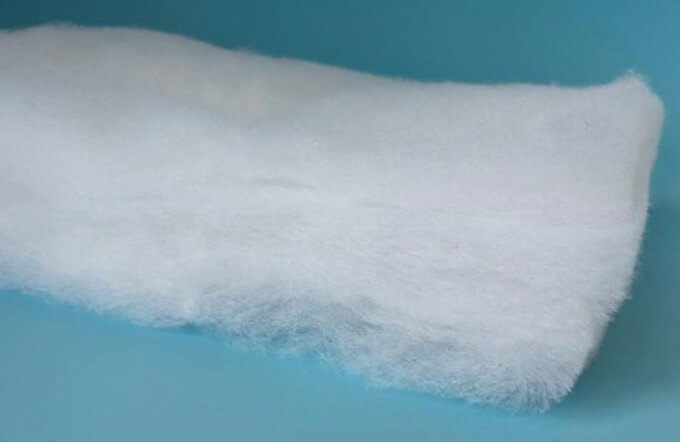
The following types of microfiber cloth are commonly used.
A. One mixture of 80% polyester and 20% spandex (known as Needle One in the eyeglass wiping cloth industry), with the following cross-sectional view of the fiber.
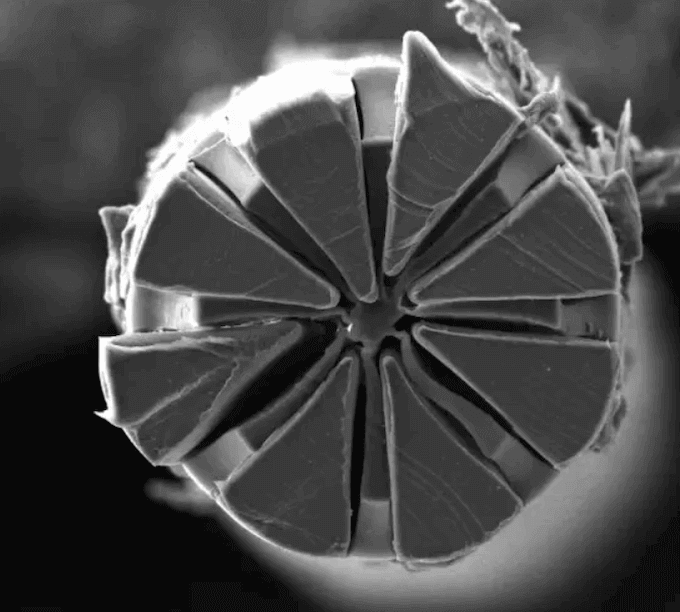
In addition, the Double-Side velvet in the eyeglass fabric industry is also 80% polyester and 20% mixed textile microfiber fabric. But its structure is not quite the same, it is 80% polyester as the base cloth frame, and then a mixture of polyester and nylon fibers is attached to the surface. Bellow picture shows you that No.1 is the basement of 80% polyester, and NO.2 is nylon on two sides.
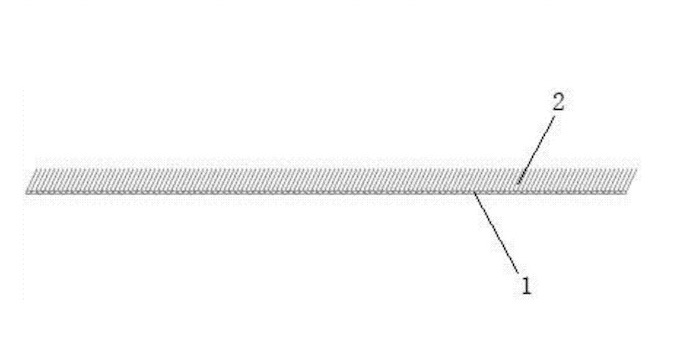
B. 100% polyester (known as needle two in our glasses wiping cloth industry), cross-sectional view as follows.
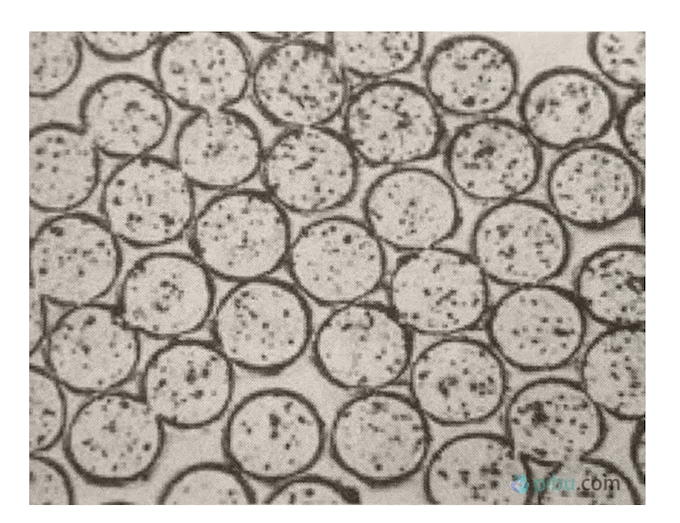
There is also a material called Sea Island Silk in the eyeglass fabric industry, which is also 100% polyester composition. It has a different cross-section because it has multiple independent island-like structures inside each fiber filament, so people call this material Island Silk.
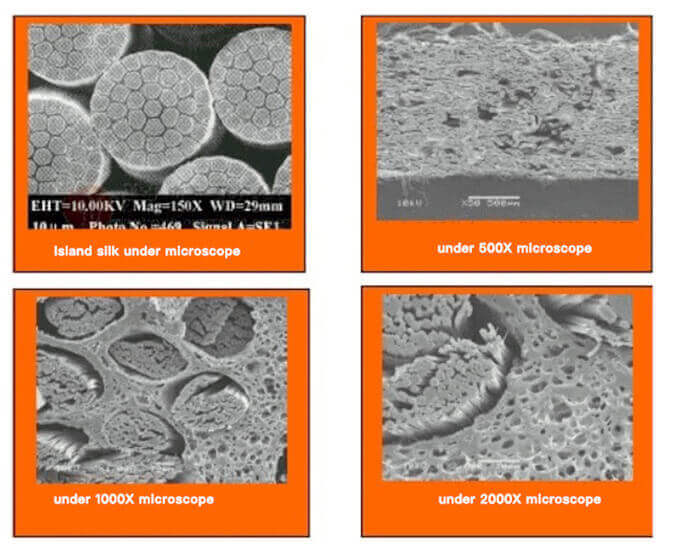
These two kinds of microfiber, polyester and nylon blend material will be better, the wipe effect is also better, and of course, the cost will also be higher.
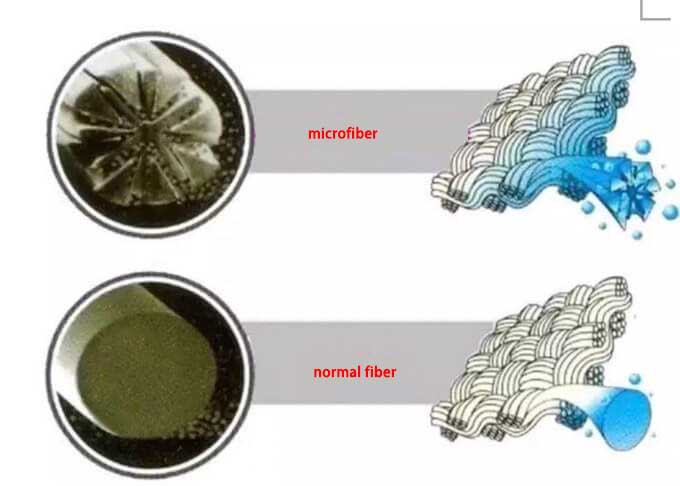
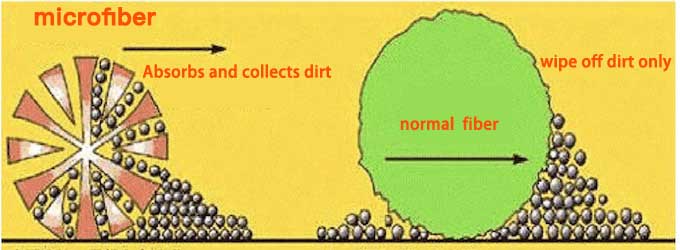
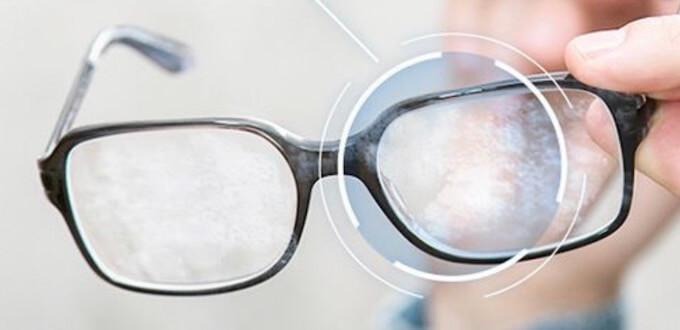
I believe that people who wear glasses can feel the daily inconvenience, such as winter from the outside into the house, the lens will be directly fogged, nothing can see clearly! Glasses wear a long time and inevitably will fall on the dust, not to mention the autumn and winter seasons in some cities haze. So what do you do when your eyeglass lenses are dirty? Most people’s reaction may be to glasses on a breath, take out the regular fabric or silk towel, or even raise their sleeves and start wiping. But you know what, this method is easy to damage the lenses.
Clothes have large fiber gaps, which can harbor a lot of dust over time. If there is hard dust inside the cloth (for example, small sand, quartz hardness of 7) will also scratch the lenses, so wiping glasses in this way will only be counterproductive, and the more you wipe, the more blurred they will be. And glasses generally use optical glass lenses or resin lenses, which are resistant to wear and tear and are prone to scratches. Under the microscope, the scratches on the surface of the lenses are mainly divided into two types, one is due to grit scratches, shallow and small, the wearer is not easy to notice; the other is generated by the larger grit scratches, deep and rough around the periphery, in the center area will affect vision.
Above we talked about why we need to use a microfiber cloth to clean the eyewear, but many friends are not very familiar with the correct method of wiping, we will now teach you the correct way to use microfiber wipe glasses.
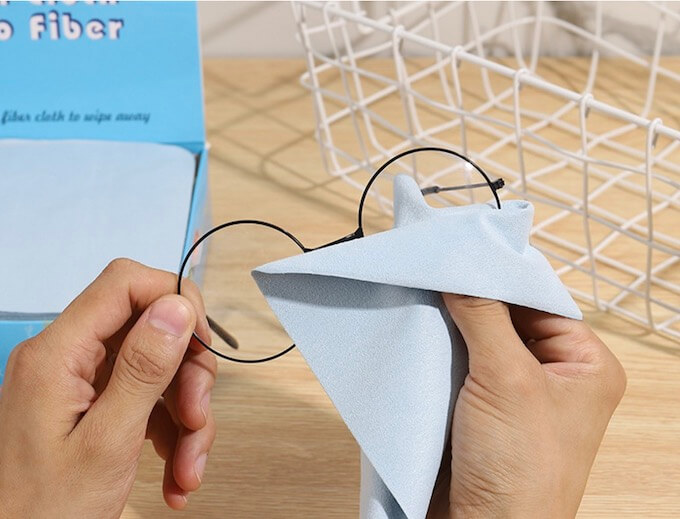
If the lenses are wiped frequently and are not particularly dirty, then we can wipe the lenses directly with a fiber cloth. The specific method is to hold the cloth with your fingers, let the cloth cover the front and back of the lens, and then gently force the cloth to wipe gently in a single direction until it is clean. Why wipe in a single direction? Because wiping back and forth will bring back the stains that have been wiped off and stain the clean lenses again. However, if the lenses are dirty or have not been wiped for too long, use the following steps.
A. Dirtier lenses should not be wiped directly. The lenses should be wetted first, preferably by rinsing them on a tap.
B. When rinsing, it is best to use a small amount of cleaning solution and use your thumb and index finger in concentric circles to rub around the lens.
C. After the lens is clean, rinse the mirror with water.
D. Try to use velvet and absorbent eyeglass cloth to gently wipe clean in a single direction. This will not leave water and dirt residue.
Microfiber gap is larger, strong ability to remove dust, but with the use of time, will accumulate a lot of dust, please remember to clean (because microfiber cloth is washable products) or switch to a new glasses cloth, with such glasses cloth wipe glasses will only be counterproductive, the more wipe the more blurred.
Although our current main customer base is facing the eyewear industry, we constantly have new customers from other industries to consult and cooperate with, and in the process of cooperation, we learned that their divisions use microfiber cloth for these industries below.

Before we talk about the specific production process, we will give you a few relevant knowledge points.
A. Microfiber fabric is produced by the knitting process, so what is knitting? Knitting is a process that uses knitting needles to bend yarns into loops and string them together to form a fabric。
B. Knitting is divided into warp knitting and weft knitting, and we use weft knitting. Weft knitting means that the yarn is fed into the needle along the weft direction to knit the fabric. It is also easy to understand warp knitting. Warp knitting means that the yarn is fed into the needle in the warp direction to knit the fabric.
C. The difference between weft knitted fabric and warp knitted fabric is as follows. Weft knitted knitted fabric consists of one (or several) yarns per row. The figure below shows one yarn。
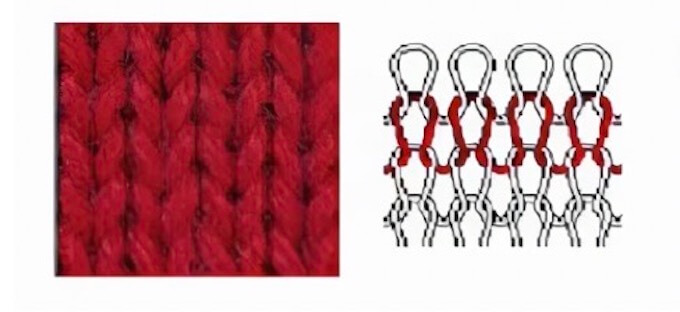
Warp knitted fabrics: Each row consists of one or several parallel groups of yarns, with one yarn forming only one (or two) loops in a row. The picture below shows four yarns (green, red, yellow, and white)
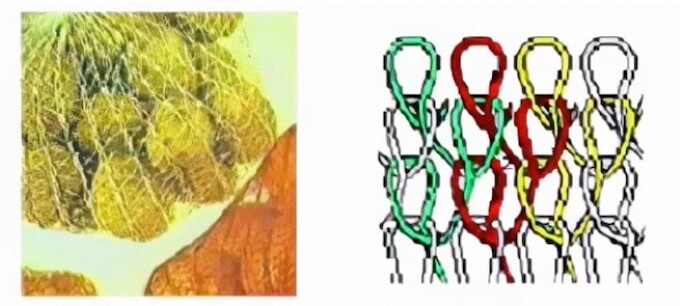
D. Knitting out the front and back of the product pattern is not the same, especially weft knitted fabrics. If you use a magnifying glass to observe, the front side can see the looping column of the loop covering the top of the loop arc, and the appearance of longitudinal stripes; on the reverse side we can see the loop arc of the loop covering the top of the loop residence, the appearance of the loop arc.
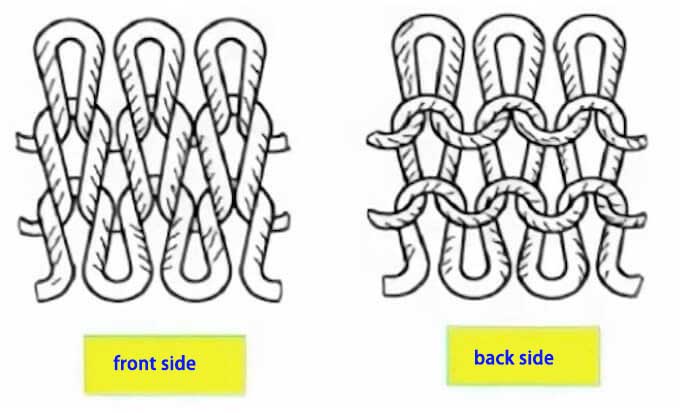
E. There are single-sided and double-sided knitted fabrics. Single-sided knitted fabric: Knitted fabric knitted by one needle bed. The loop arcs or loops of the loops are concentrated on one side of the fabric. The figure above shows a single-sided knitted fabric。
Double-sided knitted micro fabric: A knitted fabric made from two needle beds. Both sides of the fabric have front loops.
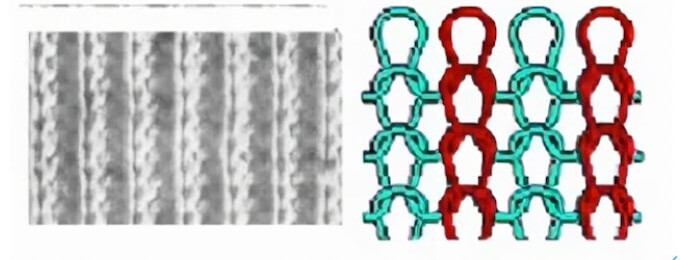
a) Microfiber Coil length. It is also the length of yarn needed to form a loop, generally in millimeters. Therefore, it affects the performance of knitted fabrics, such as dispersion, elongation, abrasion resistance, elasticity, strength, resistance to pilling and hooking, etc.
b) Microfiber Density: The loop determines the density of the knitted fabric (the longer the loop, the lighter the gram weight per unit square meter, we say this knitted fabric is thinner; the shorter the loop, the heavier the gram weight per unit square meter, we say this knitted fabric is tighter). Density is divided into horizontal density and vertical density. The horizontal density is along the direction of the horizontal column of the coil, the number of longitudinal columns of the coil within a specified length (for example, 100mm). Longitudinal density is along the direction of the longitudinal direction of the coil, the number of horizontal columns of the coil within a specified length (for example, 100MM). We speak of density index in terms of grams per square meter on a daily basis. This is the standard for quality inspection.
c) Microfiber dispersion: knitted fabric yarn break cargo coil after the loss of the string set contact, the coil and coil separation phenomenon is called dispersion. Impression of the factors is knitted fabric tissue structure (weft knitted fabric easy to disperse, because he has a single structure), yarn friction coefficient and bending stiffness, as well as the degree of fabric thinning.
d) Microfiber Elongation: The elongation characteristic of knitted fabric when stretched by an external force. The longer it can be pulled, the better.
e) Microfiber Elasticity: when the external force that causes the deformation of the knitted fabric is removed, the ability of the knitted fabric to recover its shape. The stronger the recovery ability, the better.
a) Basic organization: Weft flat knitting organization, ribbing organization, double-sided organization.
b) Variation organization: variation flat knitting organization, variation ribbing organization
c) Pattern organization: jacquard organization, collection loop organization, plush organization, etc.
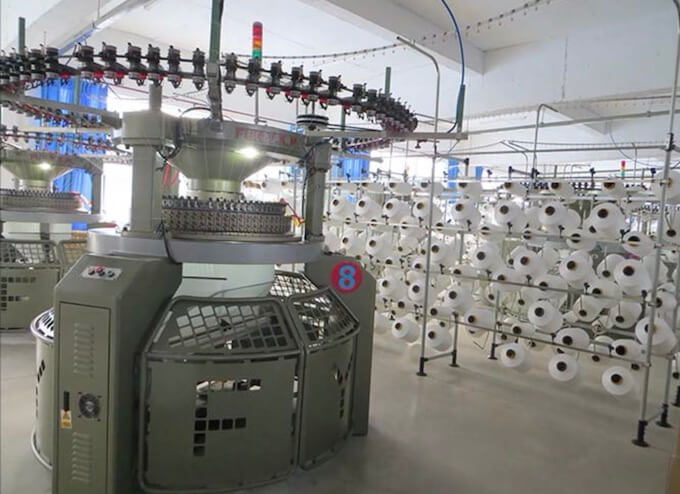
Fiber yarns are knitted into a blank fabric by circular knitting machines. The knitting comes out in a circular shape, so you need to do a belly-breaking action to get it into a whole fabric.
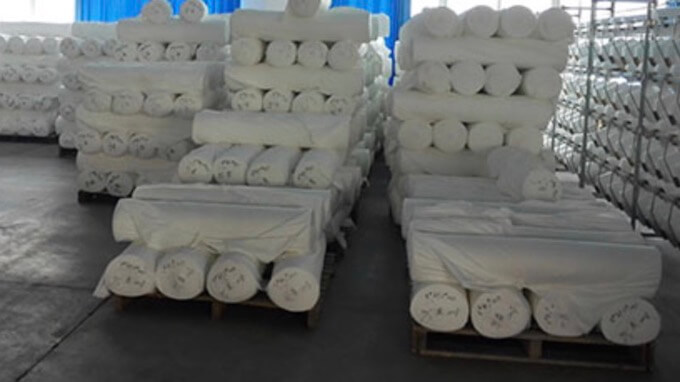
Once the yarn is knitted into a blank, we need to load the blank into a dyeing tank for dyeing.
In the below video, you can see the part of the procession.
The fabric will do the brushing treatment on the fabric after dyeing. That is the surface of the fiber filaments with machine friction, the surface of its destruction, so as to produce fine fluff so that the surface of the microfiber fabric is softer.
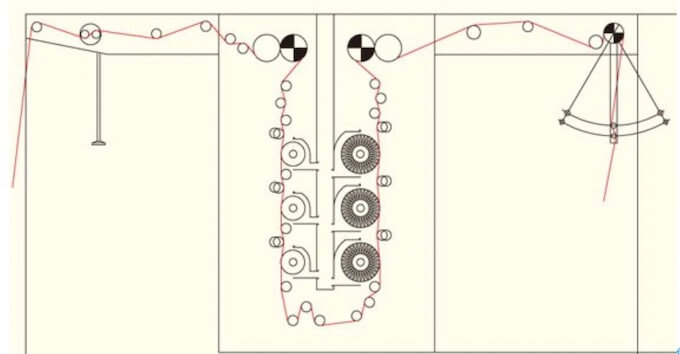
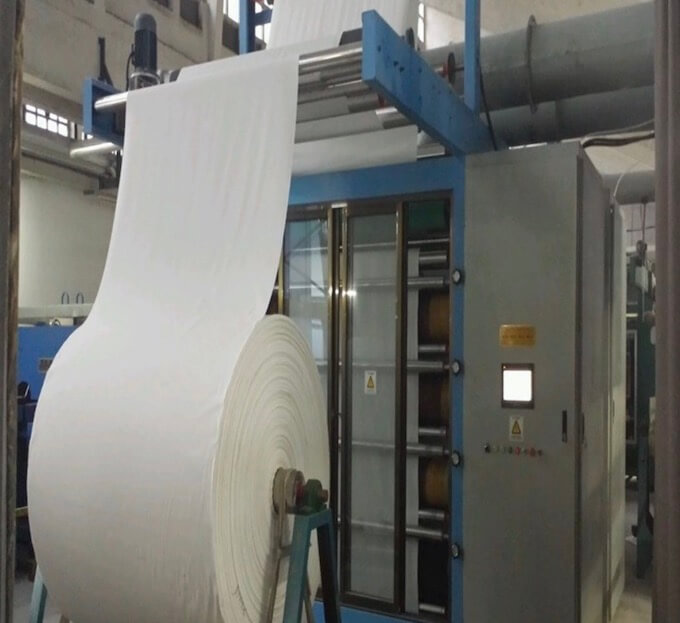
it is to suck away the lint/flocking and dust that are completely worn off during the grinding process so that the fabric is cleaner and tidier.
The fabric should be rolled in time to be neatly stacked in a roll, otherwise, there will be many wrinkles on the surface of the fabric.
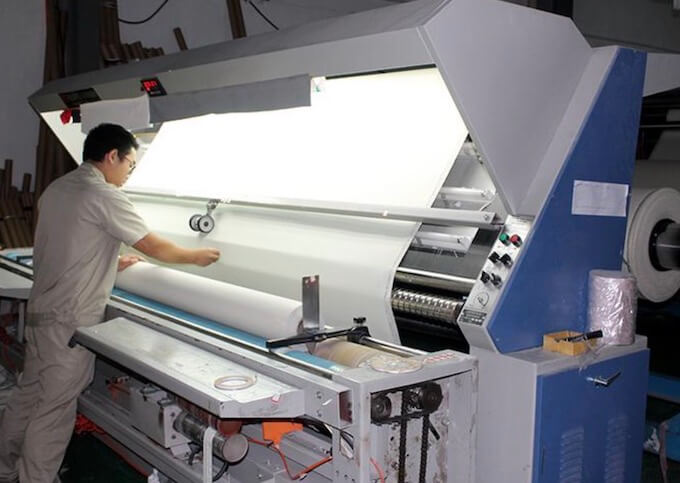
Then cut the whole roll of microfiber cloth into pieces according to the size needed by each customer.
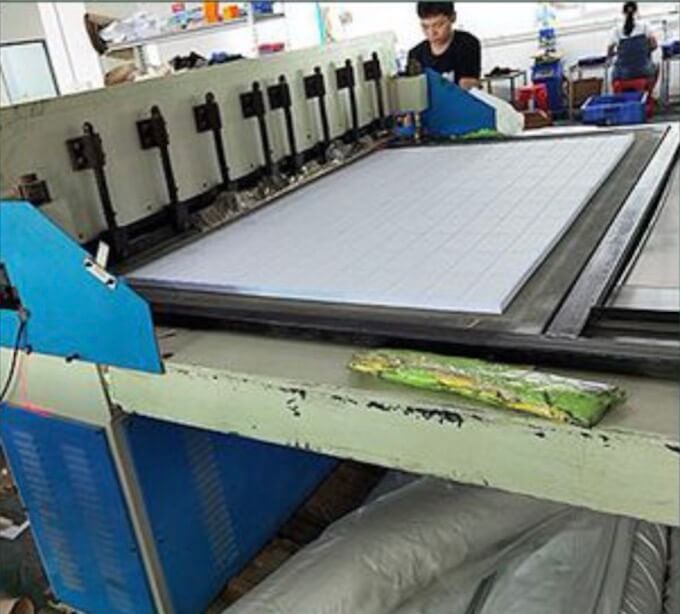
custom logo process on each microfiber cloth according to the client’s demand.
The last thing is to customize the packaging according to the requirements of different guests.
To sum up, the microfiber production process is simply: yarn – weaving (weft knitting) – blank – open fiber (needle one, sea island silk, double-sided velvet need) – dyeing – rinsing – solid color – out of the tank dewatering – spreading cloth – shaping – roll – grinding (if needed) – shaping – flocking absorption – roll – cutting – logo process – packaging.
The conventional Logo processes are screen printing (ink printing and metal powder printing), stamp (colorless embossing and electrochemical aluminum film embossing), and heat transfer printing. Each process has different characteristics
Digital thermal transfer is the way of digital spray painting, the image inside the computer through the high-definition printer with thermal transfer ink, spray painting the pattern on the top of the thermal transfer paper, and then through the thermal transfer and then transferred on top of the relevant products. The cycle time is short, and the color allocation is more than 95% similar to the drawing, its efficiency is fast and the color is vivid. It can meet the complex design of color and highlight the high-grade quality.
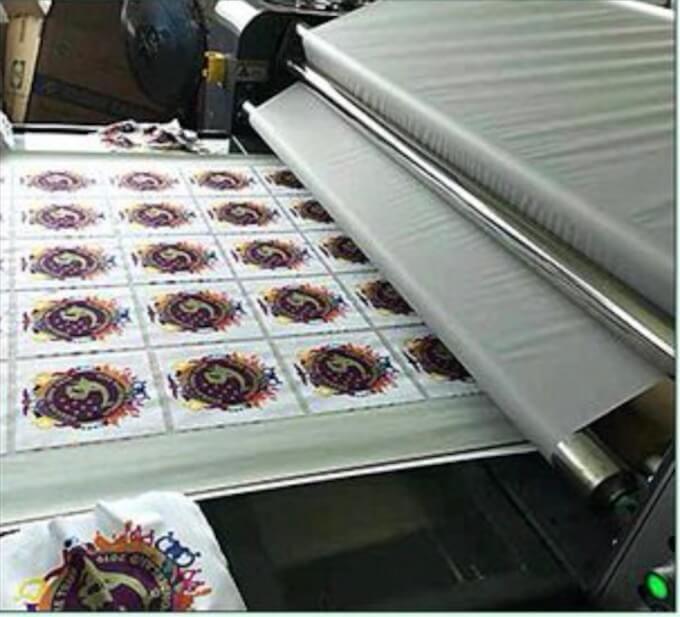
Screen printing generally refers to screen printing, the printing plate in the printing through a certain pressure so that the ink through the eyelet of the hole plate is transferred to the substrate, forming the image or text. Screen printing equipment is convenient, printing is clear, and positioning is accurate. Can be multi-color overlay printing, but the production speed is relatively slow, and the ink coverage is relatively hard and a bit rough.
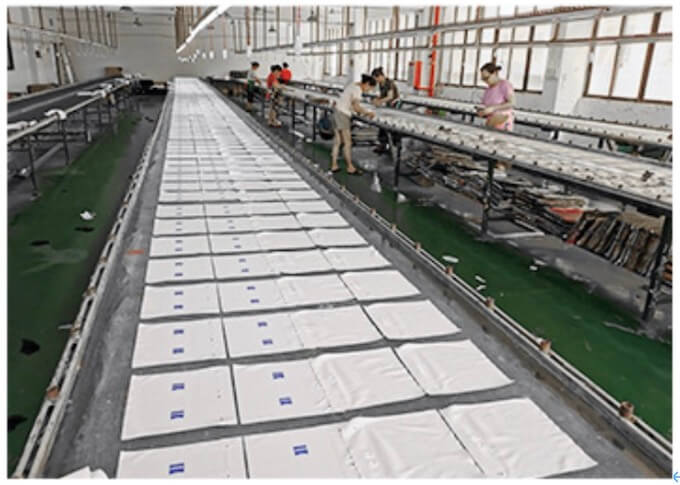
Hot stamping is under the action of temperature and pressure to make its material surface and thickness change, and the extruded material filled in the mold-shaped cavity with undulating fine lines convex, concave, and in the fabric, the surface to get formed undulating drum convex and lettering or pattern of a forming party. If combined with the electrochemical aluminum film, embossing the customer’s desired color, common is hot stamping golden or hot silver. The gold and silver mentioned here are the color of the aluminum film attached to the microfiber cloth after being hotly pressed at high temperatures to form the color of the logo.

A. Single piece flat packed into a plastic bag
B. Single piece folded into a plastic bag packaging
C. single piece folded into paper sleeve packaging
D. a single piece in flat matching paper card plastic bag packaging
E. Single piece folded matching paper card with plastic bag packaging
F. 100 pieces flat lay in plastic bag packaging.
G. 100-piece flat packed in carton packaging
H. 100 pieces flat with PVC box packaging
I. Some other special customized packaging
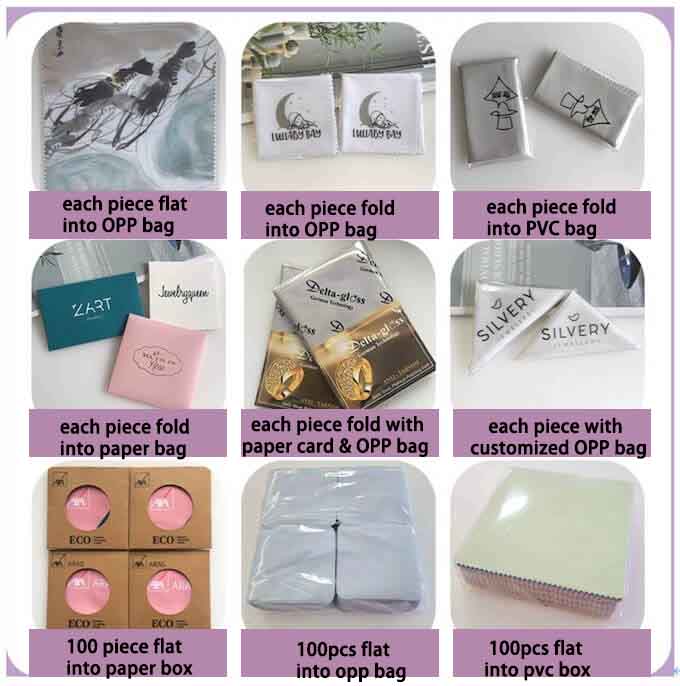
If you have any questions or want to know more information, please feel free to leave your message in the comment section below and we will reply. Of course, you can also contact us directly by email, we will be more timely interaction. If you like this article, you can forward it to your social platform, so that your friends can learn the relevant knowledge, please be sure to mark the article source, thank you.
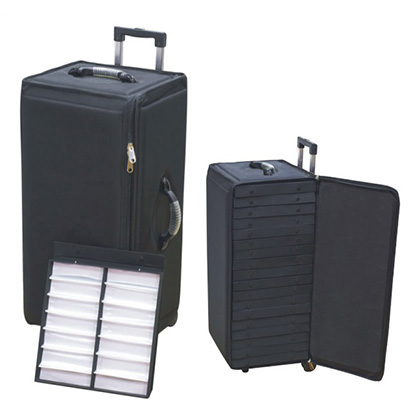
If you also need the eyewear sample suitcase for your sunglasses, you are welcome to talk with us. here is the link https://www.isunnypacking.com/eyewear-sample-bags-manufacturer/ for more selections.
Related article: All Info You Need For Glasses Case

